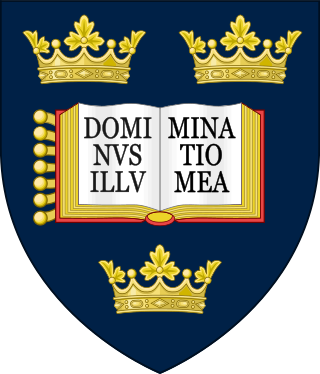Related Research Articles

The history of the Internet has its origin in information theory and the efforts of scientists and engineers to build and interconnect computer networks. The Internet Protocol Suite, the set of rules used to communicate between networks and devices on the Internet, arose from research and development in the United States and involved international collaboration, particularly with researchers in the United Kingdom and France.
The Fifth Generation Computer Systems (FGCS) was a 10-year initiative begun in 1982 by Japan's Ministry of International Trade and Industry (MITI) to create computers using massively parallel computing and logic programming. It aimed to create an "epoch-making computer" with supercomputer-like performance and to provide a platform for future developments in artificial intelligence. FGCS was ahead of its time, and its excessive ambitions led to commercial failure. However on a theoretical level, the project spurred the development of concurrent logic programming.

NEC Corporation is a Japanese multinational information technology and electronics corporation, headquartered in Minato, Tokyo. The company was known as the Nippon Electric Company, Limited, before rebranding in 1983 as NEC. It provides IT and network solutions, including cloud computing, artificial intelligence (AI), Internet of Things (IoT) platform, and telecommunications equipment and software to business enterprises, communications services providers and to government agencies, and has also been the biggest PC vendor in Japan since the 1980s when it launched the PC-8000 series.

Project Athena was a joint project of MIT, Digital Equipment Corporation, and IBM to produce a campus-wide distributed computing environment for educational use. It was launched in 1983, and research and development ran until June 30, 1991. As of 2023, Athena is still in production use at MIT. It works as software that makes a machine a thin client, that will download educational applications from the MIT servers on demand.
TRON is an open architecture real-time operating system kernel design. The project was started by Professor Dr. Ken Sakamura of the University of Tokyo in 1984. The project's goal is to create an ideal computer architecture and network, to provide for all of society's needs.
Sirindhorn International Institute of Technology (SIIT) is a semi-autonomous institute of technology established in 1992 within Thammasat University. It is located in Pathum Thani, Thailand. One of Thailand's research universities, it offers science, technology and engineering education, as well as related management programs. All are international programs, with English language as a medium of instruction. The institute is part of the Links to Asia by Organizing Traineeship and Student Exchange network, an international consortium of universities in Europe and Asia.

IBM Research is the research and development division for IBM, an American multinational information technology company headquartered in Armonk, New York, with operations in over 170 countries. IBM Research is the largest industrial research organization in the world and has twelve labs on six continents.

The web address suffix .jp is the Internet country code top-level domain (ccTLD) for Japan. It was established in 1986 and is administered by the Japan Registry Services.

King Mongkut's Institute of Technology Ladkrabang is a research and educational institution in Thailand. It is situated in Lat Krabang District, Bangkok approximately 30 km east of the city center. The university consists of nine faculties: engineering, architecture, science, industrial education and technology, agricultural technology, information technology, food industry, liberal arts, and medicine.
Riken is a large scientific research institute in Japan. Founded in 1917, it now has about 3,000 scientists on seven campuses across Japan, including the main site at Wakō, Saitama Prefecture, just outside Tokyo. Riken is a Designated National Research and Development Institute, and was formerly an Independent Administrative Institution.

The Japan International Cooperation Agency is a governmental agency that delivers the bulk of Official Development Assistance (ODA) for the government of Japan. It is chartered with assisting economic and social growth in developing countries, and the promotion of international cooperation. The OECD's Development Assistance Committee published a peer review of Japan's development co-operation in October 2020. It was led by Dr. Shinichi Kitaoka, the former President of the International University of Japan, from 2015 to 2022. On 1 April 2022, Professor Akihiko Tanaka assumed the presidency of the Japan International Cooperation Agency (JICA) as the successor to Professor Shinichi Kitaoka.

Joji Yuasa is a Japanese composer of contemporary classical music.

The College of Computer Studies (CCS) is one of the eight colleges of De La Salle University. It was established in 1981 as the Center for Planning, Information, and Computer Science offering only a Bachelor of Science degree in Computer Science. The department was formally declared as a college in 1984. In 1990, the college was transferred to its new building, the INTELLECT Building, which was eventually renamed as the Gokongwei Building. In 1996 the college was granted semi-autonomous status along with the Graduate School of Business which led to the establishment of De La Salle-Professional Schools, Inc. The college became a part of De La Salle Professional Schools but later transferred back to the university.
Online games are video games played over a computer network. The evolution of these games parallels the evolution of computers and computer networking, with new technologies improving the essential functionality needed for playing video games on a remote server. Many video games have an online component, allowing players to play against or cooperatively with players across a network around the world.

The history of IBM research in Israel dates from 1972 with the establishment of the IBM Haifa Research Lab. The research lab is located in a custom-built complex on the University of Haifa campus, with branches in Haifa and Tel Aviv. The staff at the IBM Haifa Research Lab works on projects connected to the topics of healthcare, cloud computing, formal and image and video analytics among others.

Yuen Poovarawan is a Thai computer scientist. He worked at Kasetsart University in Bangkok, Thailand until his retirement, where his last positions were associate professor in the Department of Computer Engineering and Vice President for Information Technology. Among his noted contributions are the development of natural language processing for the Thai language, and the advancement of information technology services in Thailand, particularly the implementation of networking infrastructure at Kasetsart.

Oxford University Innovation Limited (OUI) is a British technology transfer and consultancy company created to manage the research and development (R&D) of University spin-offs. OUI is a wholly owned subsidiary of the University of Oxford, and is located on Botley Road, Oxford, England. OUI was previously known as Isis Innovation (1988–2016) and Oxford University Research and Development Ltd (1987–1988).

Danny Cohen was an Israeli American computer scientist specializing in computer networking. He was involved in the ARPAnet project and helped develop various fundamental applications for the Internet. He was one of the key figures behind the separation of TCP and IP ; this allowed the later creation of UDP.

Kathleen M. Carley is an American computational social scientist specializing in dynamic network analysis. She is a professor in the School of Computer Science in the Carnegie Mellon Institute for Software Research at Carnegie Mellon University and also holds appointments in the Tepper School of Business, the Heinz College, the Department of Engineering and Public Policy, and the Department of Social and Decision Sciences.
Daniel Mier Gusfield is an American computer scientist, Distinguished Professor of Computer Science at the University of California, Davis. Gusfield is known for his research in combinatorial optimization and computational biology.
References
- ↑ Jun Murai and Akira Kato, Researches in network development of JUNET, Proceedings of the ACM workshop on Frontiers in computer communications technology, 1987 ()